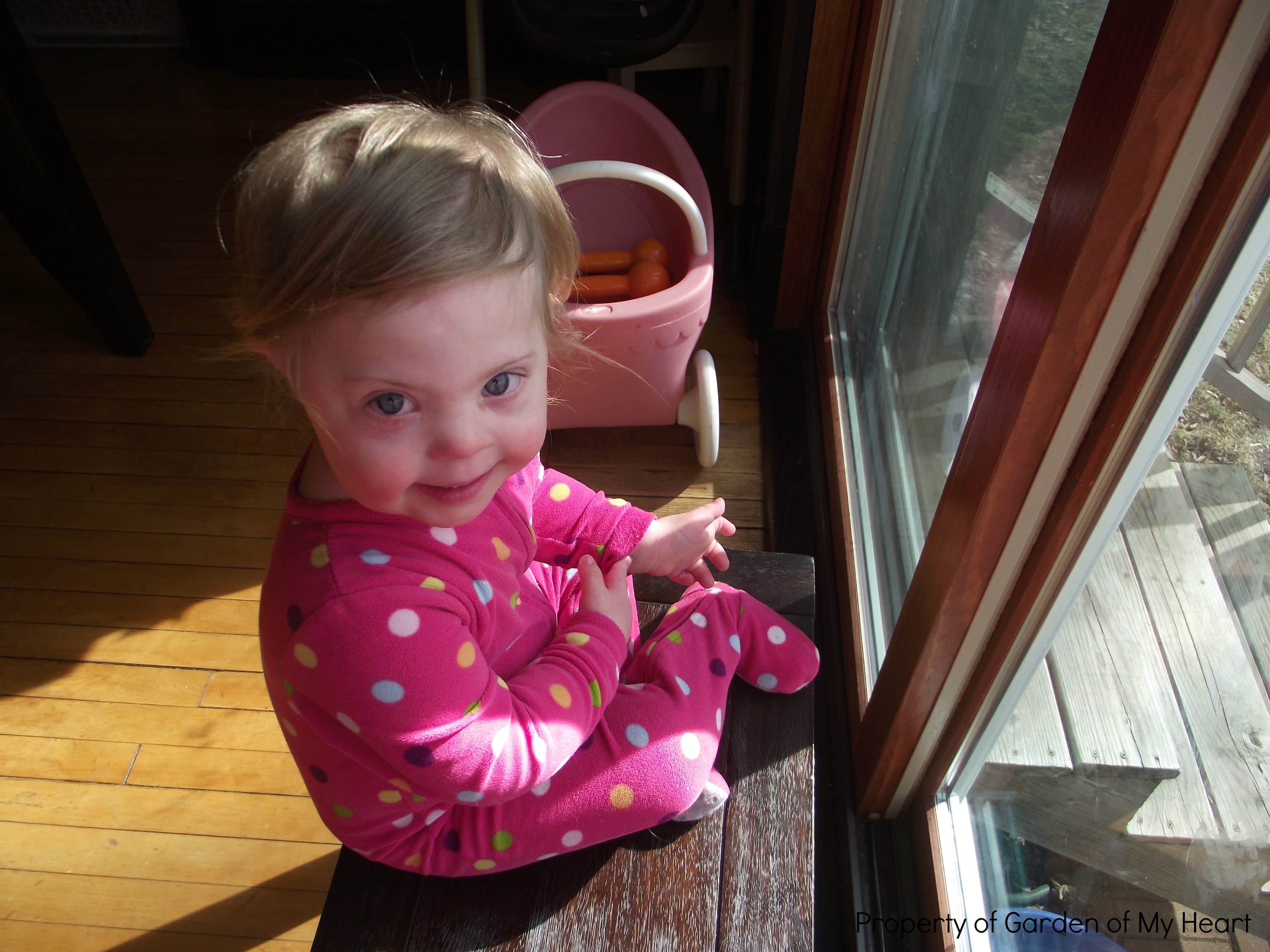We have an IEP for Rowenna. I’ve written this post about 5 times, each looking at this from a different angle, each sounding a bit bitter about the whole process and inspiring me to try again for a more pleasant report. I’ve given up on trying to spout sunbeams about the IEP (feeling like perhaps I’ve been a bit bitter about the overall process thus far), so here’s a picture of Rowenna to get you going.
The basic details of Rowenna’s IEP: she qualifies for special education services through early childhood education due to her speech delay. At this time there is no way to test her cognitive ability, but her speech delay is significant enough on its own for Rowenna to access services. She was recommended for 4 mornings a week, with each of the 3 therapies once a week. Her IEP is an ok mix of goals we chose and goals the IEP team chose, and since the team’s goals are in no way harmful or distracting from our preferred goals, they remained in her IEP.
But here’s what it boils down to, the thing I’ve put in each of the many drafts of this post: the need for tangible, testable IEP items for “accountability” and “progress” make it extremely difficult to include much of what my family values to the IEP.
An example of one of Rowenna’s goals: “will kick a ball 2/3 times with 75% accuracy, on 3/4 attempts.”
Who. The. Heck. Cares?
Not me. (And frankly, since she’s half mine…sweet girl has nature fighting her on this one. Sports are absolutely not my thing.)
Now I’ll have a dozen special ed teachers, therapists, and other professionals explain to me why this is. Please believe me when I say that I understand the processes, mechanisms, and laws in place that result in IEP goals like that. I also understand the theory behind goals like that. I’m a former teacher married to a teacher. I got the training, I used to live it. My husband lives it every single day. I get it. Trust me.
What I’m saying, bluntly, is that I really don’t care. As a parent, I don’t care. As a human being, I don’t care. And it’s time that the education system sat back and listened to students and families about this stuff, and created policies that would save all of us this ridiculous song and dance. Goals like this don’t mean very much. If she kicks the ball 2/3 times with only 65% accuracy, to me that is still success: she can kick the ball. Obviously. Maybe she’s just bad at sports. Or she was cranky. Or didn’t want to kick. Or didn’t feel good. Or the transition from what she was doing (possibly a much loved activity) to an artificial testing environment didn’t go smoothly. What’s the difference between 65% accuracy and 75% accuracy? But in terms of her IEP, it would be considered failure to meet the goal and we would have to decide whether or not to place that goal on next year’s IEP. (Please bear in mind that I am using the kicking as a single example. There are others like this in the IEP.) Goals like this set up a lot of testing opportunities; school should be empowering, not an endless series of tests – a combination of opportunities to grow and opportunities to shine.
I know we could have “fought” goals like that and demanded others. We made a conscious decision not to do so at this time.
Since at best the arbitrary goals are a chance for Rowenna to show off her skills and at worst a waste of everyone’s time, we left them in and asked for things we really wanted for Rowenna. We asked that signs be counted as words and that she be given the freedom to express herself using signs if she chooses. We asked for social goals – things like approaching other students, initiating communication, collaborative play. We also asked that any testing be done in the classroom setting rather than an unnatural pull out. (Really, skills don’t mean anything if you can’t do them in the setting in which they need to be done. I don’t care if she can kick the ball with just the PT in an empty gym, but I do care if she can do it while playing with her friends.) None of this was an issue for the team.
In the end, we are left feeling…underwhelmed. I was not expecting a “fight” and definitely did not get one. It’s a delicate dance of advocating for your child, and you could sense the team’s “dance” as well. We were all polite and doing what we each thought was best for Rowenna. We felt our goals and needs were addressed. Rowenna had fun drawing on the Smart Board (though that was kind of a headdesk moment for me when the OT exclaimed that wow, she really does know how to draw horizontal and vertical lines). The IEP is fine, a simple guiding document for the year to come. I suspect Rowenna will meet several of the goals before school even starts, but we can address that when and if we need to.
And that’s where we leave it for now. We have also applied for Open Enrollment, our state’s program that allows children to enroll in the public school district of choice. We would prefer that Rowenna attend the neighboring district, for many reasons I will get into if we are accepted. We also applied for a scholarship for next year’s Montessori tuition.
In the meantime, we have 7 weeks left of Birth to 3 and Montessori, then a summer free of school, therapy, and other commitments. Looking forward to the coming months!








One Response to Chapter 3: The IEP